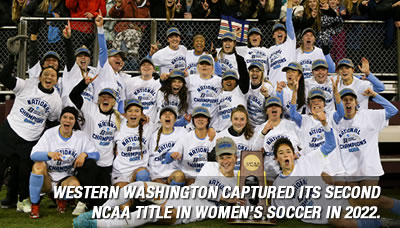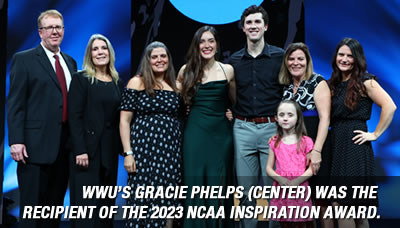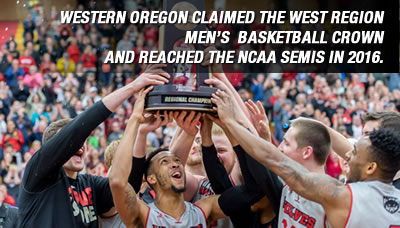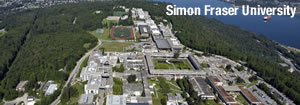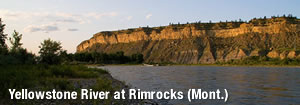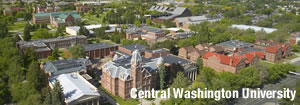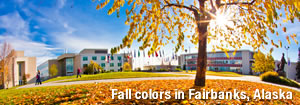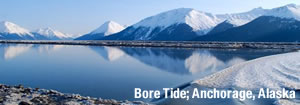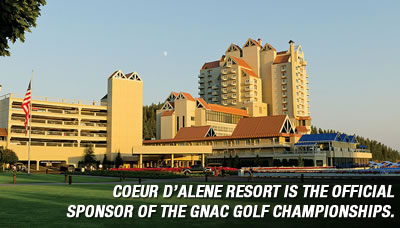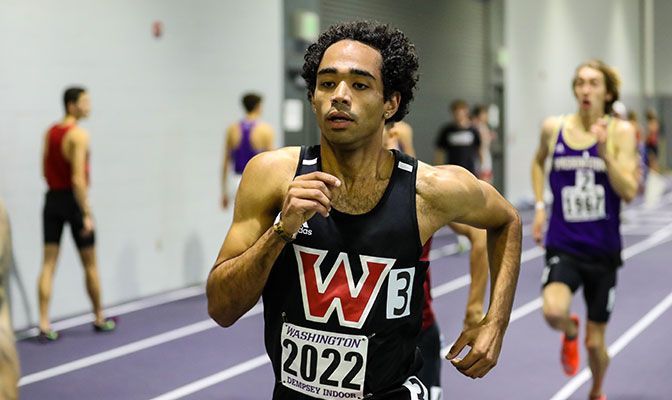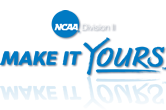Wednesday, December 9, 2020
by Blake Timm, Assistant Commissioner For Communications
MONMOUTH, Ore. –Derek Holdsworth expected to become to next best middle-distance runner to come out of Western Oregon University.
While he may still hold that title, the COVID-19 pandemic will leave everyone wondering what could have been.
“From a GNAC standpoint, no one got to see how good he really is,” said recently retired WOU cross country/track and field coach Mike Johnson.
No one has run faster in conference history in the indoor 800 meters than Holdsworth, who transferred to Western Oregon in 2019 from Colorado’s Trinidad State Junior College.
His lifetime indoor best of 1:47.74, run at February’s UW Invitational, was nothing less than elite. The GNAC record by almost two seconds, Holdsworth’s time was the season best in Division II by over a second and the fifth-fastest all-time. He ranked fifth over all college divisions in 2020, No. 11 among all U.S. athletes and was tied for 43rd in the world.
After winning the GNAC championship by over a second (despite being sick), Holdsworth was the odds-on favorite to win the Division II title and help Western Oregon vie for its third national championship in the distance medley relay in four years.
And then the only chance that Holdsworth would have to claim an NCAA title was gone.
“People knew that it was my last chance to win a trophy,” Holdsworth said. “The number of messages and the amount of positivity and that everyone showed me was great. ‘Hey, we knew that you would have won that. You were the guy.’”
While that opportunity was lost, the move to Western Oregon has provided Holdsworth positive direction in his life and a clearer sense of what it will take to meet his eventual goal of representing the United States at the Olympic Games.
THE LONG AND WINDING ROAD
Derek Holdsworth’s journey to becoming one of the country’s top collegiate half milers has come with its share of twists and turns.
A heralded 800-meter specialist coming out of Lafayette High School in Williamsburg, Virginia, Holdsworth won the 2014 USA Track and Field junior national indoor title and went on to finish third at the outdoor junior nationals.
Holdsworth initially did not have the proper academic credentials to enroll at an NCAA school. He spent the next two seasons competing with the District Track Club in Washington, D.C., under coach Tom Trumlik, where he lowered his lifetime outdoor best to 1:47.07 before moving west to enroll at Trinidad State. At the junior college level, Holdsworth was a six-time national champion during the cross country and indoor seasons.
While the accolades would normally have Division I programs knocking down his door, the next step for Holdsworth was not an easy one to take. He had discussions with programs at Iowa, Oklahoma and Oregon. Through a series of unfortunate events, however, Holdsworth discovered that his NCAA eligibility to run at the Division I level was exhausted.
While at Trinidad State, Holdsworth had met Western Oregon assistant coach Zach Holloway while he was working as a graduate assistant at Adams State. After reading about the national championship successes of David Ribich and Dustin Nading in Monmouth, Holdsworth contacted Holloway. Before long, Holdsworth and Johnson were engaging in regular conversations.
“The first time that we really talked for a long time, I was heading to New Jersey from D.C. to run an 800,” Holdsworth said. “I was by myself, driving about three hours to run. I was paying my own gas money, paid my own meet entry, all that stuff, trying to make it work. And he saw that.
“We talked and he said, ‘No matter what, I want an opportunity to train you. I think you have something special. Let’s try to make it work.’ Three weeks later I was out here on a visit.”
Three months later, Derek Holdsworth arrived at Western Oregon. He was injured and 15 pounds overweight.
“I just felt terrible every time that I ran,” Holdsworth said. “I spent the entire season, pretty much, trying to lose all of that weight and trying to remember how to run again.”
He did remember. Holdsworth ran two cross country meets for the Wolves, clocking a best of 32:10 over 10,000 meters at the NCAA West Regional in Monmouth. The fitness was coming back and the extra weight was gone.
Come indoor season, the old Derek Holdsworth re-emerged. He opened the 2020 indoor season with a 1:50.02 800 meters at the UW Preview. Two weeks later, he smashed the GNAC record and launched to the top of the collegiate best list with a 1:47.74 at the UW Invitational. He beat the largely Division I field by nearly a second.
After an easy win at the GNAC Championships despite illness, Holdsworth was poised for a breakthrough at the Division II Indoor Championships. And then COVID-19 pulled the national championship trophy from his hands.
“It was a shock,” Johnson recalls. “It’s like climbing to the top of a rope and then someone cuts it and you all fall down. Derek was mature about it all. I think because of the setbacks he has had all through his career, it helped him cope with it better.”
Holdsworth said that he was less disappointed in losing out on his 800-meter title because he felt, to a point, that he had proven himself with his performances in Seattle. What hurt more was the chance to help the Wolves’ DMR stand on the podium again.
“The DMR hurt more because we weren’t the favorites,” said Holdsworth. “We had never put our No. 1 lineup on the track together and yet we had won every DMR that we competed in.”
The truncated season, however, showed Holdsworth that he still had what it took to excel at the highest level of the sport. It also gave him another father figure in Johnson, whom Holdsworth respectfully compares to his high school coach, Drew Mearns.
“Coach Mearns and Coach Johnson are literally the same person,” Holdsworth said. “When you put the people that they know and their coaching experiences together, they are the same human being. They know everything. I count myself very fortunate that I still have both of those people in my life.”
WHERE HE BELONGS
With the NCAA seasons wiped out, racing opportunities for all kinds of track and field athletes became very limited. With his momentum from the indoor season stunted, Holdsworth had to adjust to not being able to race but also in his training opportunities.
Most training facilities at Western Oregon, including the track at McArthur Field, were closed. Not only was the Wolves’ track and field team not allowed to practice together but even outside workouts were limited in terms of the number of athletes that could participate.
For Holdsworth and Johnson, the training piece was the easy piece to work around. The duo still found venues to train on. There were a small number of WOU athletes that stayed around Monmouth and helped provide Holdsworth some socially-distanced training partners.
But without a chance to race, the workouts that can turn a good runner into a great runner felt even tougher.
“We did a workout that was three times 400 meters. We were out there and just dying,” Holdsworth said of a late spring workout that he and training partner Emmett Klus did. “It’s a workout where you feel the burn, feel the lactic acid, but it’s easier if you have been racing. Since we hadn’t been racing it was like, ‘Oh man, this is what it feels like. I don’t want to do this for two more laps.’”
In June, Holdsworth went back to Virginia for his first outdoor meet of the season, a time-trial meet with the District Track Club. His time of 1:47.90 was just off his indoor best run.
But to truly improve, and even to maintain forward progress, Holdsworth needed more meets. Enter Johnson, who was able to use his connections to get Holdsworth a coveted spot in July’s Bigger Friendly Meet. Conducted by the Portland Track Club in rural Vida, Oregon, Holdsworth was just one of a handful of unattached athletes invited to compete against elites from Pete Julian’s Nike training group, Oregon Track Club Elite, Portland Track and the Brooks Beasts.
In the 600 meters, Holdsworth clocked 1:17.08 to finish in second place ahead of Drew Windle, the 800-meter silver medalist at the 2017 World Athletics Championships, and just behind 2012 Olympic 800-meter silver medalist Nijel Amos.
“It was a totally different 600 than I had ever run in my life,” Holdsworth said. “Normally you go out as fast as you can and hang on. This was almost a tactical sit and kick 600. I think it was mainly because none of us had raced. We were like newborn baby deer learning how to race again.”
Johnson said he was not surprised that Holdsworth could hold his own with some of the world’s best. In fact, Johnson said, meet organizers came to him looking for Holdsworth.
“(Portland Track president) Michael Bergmann called me to see if Derek was available,” Johnson said. “We certainly had a preexisting relationship but most of it was because they saw Derek’s talents and wanted him in the meet.”
Holdsworth’s performance in the Bigger Friendly resulted in invitations to the remainder of the series’ meets. In two of those meets, Holdsworth was asked to serve as a pacer for the athletes in the 800 meters. The job requires an athlete to pace the field through 400 meters or 600 meters to help the field achieve a top time.
The job carried a little more pressure when you consider that Holdsworth was asked to pace for the likes of American 800-meter record holder Donavan Brazier, Windle and Matthew Centrowitz, who earned bronze in the 1,500 meters at the 2011 World Championships.
“That was the big moment where I had that star-struck feeling is when I paced Donavan in the 800,” Holdsworth said. “When you are pacing somebody else it is pretty scary because you want to make sure they get the best result they can possibly get. Donavan is the quietest runner of all-time. I didn’t hear breathing. I didn’t hear footsteps. To have him on my shoulder and not being able to hear him was pretty scary.”
The fact that Holdsworth was asked to take on pacing duties, according to Johnson, was a rite of passage of sorts.
“When people like Pete Julian and (Brooks Beasts coach) Danny Mackey are asking you to pace for their athletes, that speaks volumes,” Johnson said. “He was running cooldowns with those elite athletes he just raced. People are seeing him run and seeing what he can do. He runs fast. He runs consistently. People want him to be there.”
The magnitude of that experience is not lost on Holdsworth. By the end of the season, he felt like he belonged.
“There were only 30 people at the track and you see Donavan Brazier and Craig Engels and Nijel Amos and all of these Oregon Track Club athletes there,” he said. “And it was nice to see Dustin Nading there. I felt more at home during those meets than I did all indoor season.”
THE NEXT STAGE
For the first time in his career, Holdsworth felt comfortable with seeing his season end. After pacing the 800-meter field in August’s Big Friendly 5 meet in Newberg, Oregon, things felt like they were at a natural conclusion.
“It was better to go out with a pacing job rather than with an 800 where you don’t run that great or you run a PR and still want to go again,” he said. “I took a week off and enjoyed not thinking about running and then came back, got into it and probably had one of the best fall training blocks that I have ever had.”
Johnson said picking back up with training was never an issue for Holdsworth. Despite the challenges of the pandemic and the missed opportunities, he has never stopped being motivated.
“We picked up business as usual,” Johnson said. “We took a little bit of time off and then went right back to training. The biggest problem was finding good places to work out.”
Closures to Western Oregon’s facilities into the fall forced both athlete and coach to adapt. The usual amenities of the track, wellness center and pool continued to be restricted. When Holdsworth had to deal with an injury that limited his running for a week, he borrowed a teammate’s stationary bicycle and worked out to videos of races.
He has also spent a significant amount of time focusing on the mental aspect of his running, something that he has taken a bigger interest in as he completes his degree in psychology.
“It makes a huge difference,” Holdsworth said. “I feel like if you are not doing mental training then you are not going to get the best out of yourself.”
On the track, Holdsworth believes that he has much more work ahead to have a chance to competing at Hayward Field in June. The Olympic Trials qualifying standard is 1:46. The Olympic Games competition standard is 1:45.20. Both benchmarks will require dropping at least two seconds from his lifetime best time.
Despite that, Holdsworth believes that he is on the cusp of a breakthrough. The postponement of the trials and the Olympic Games has provided him time to focus on speed work that he believes will help him get past the 1:47 threshold he has been at for the last two years.
“I think that having this year to catch up and not have many race results where people are patting you on the back helped,” Holdsworth said. “It helped me realize there is a lot that I need to do.
“I feel a lot better doing some explosive work, which was something I had only done once or twice back home. This year, I have been doing that work consistently and it has made a difference in my form, my energy efficiency and just about everything that I need. Now it is time to nail the strength part.”
Johnson also believes that Holdsworth is ready to take his racing to the next level. He just needs the opportunities to unleash the speed stored up in him.
“If there is any place in the country where we can find him competition, Boston and here are the best places to do it,” Johnson said. “We will get him in some meets and, if he beats people, he will get the standards.”





